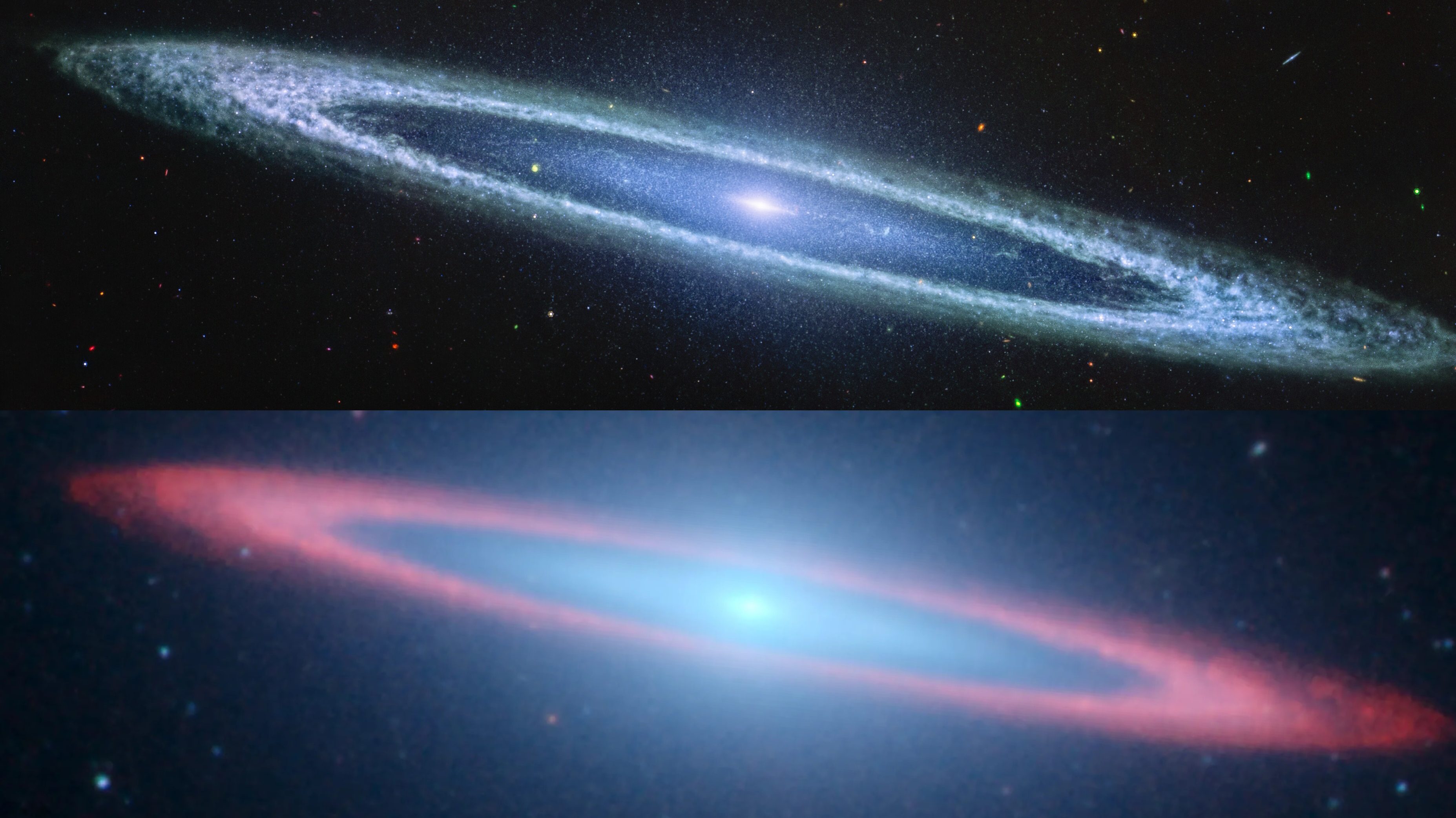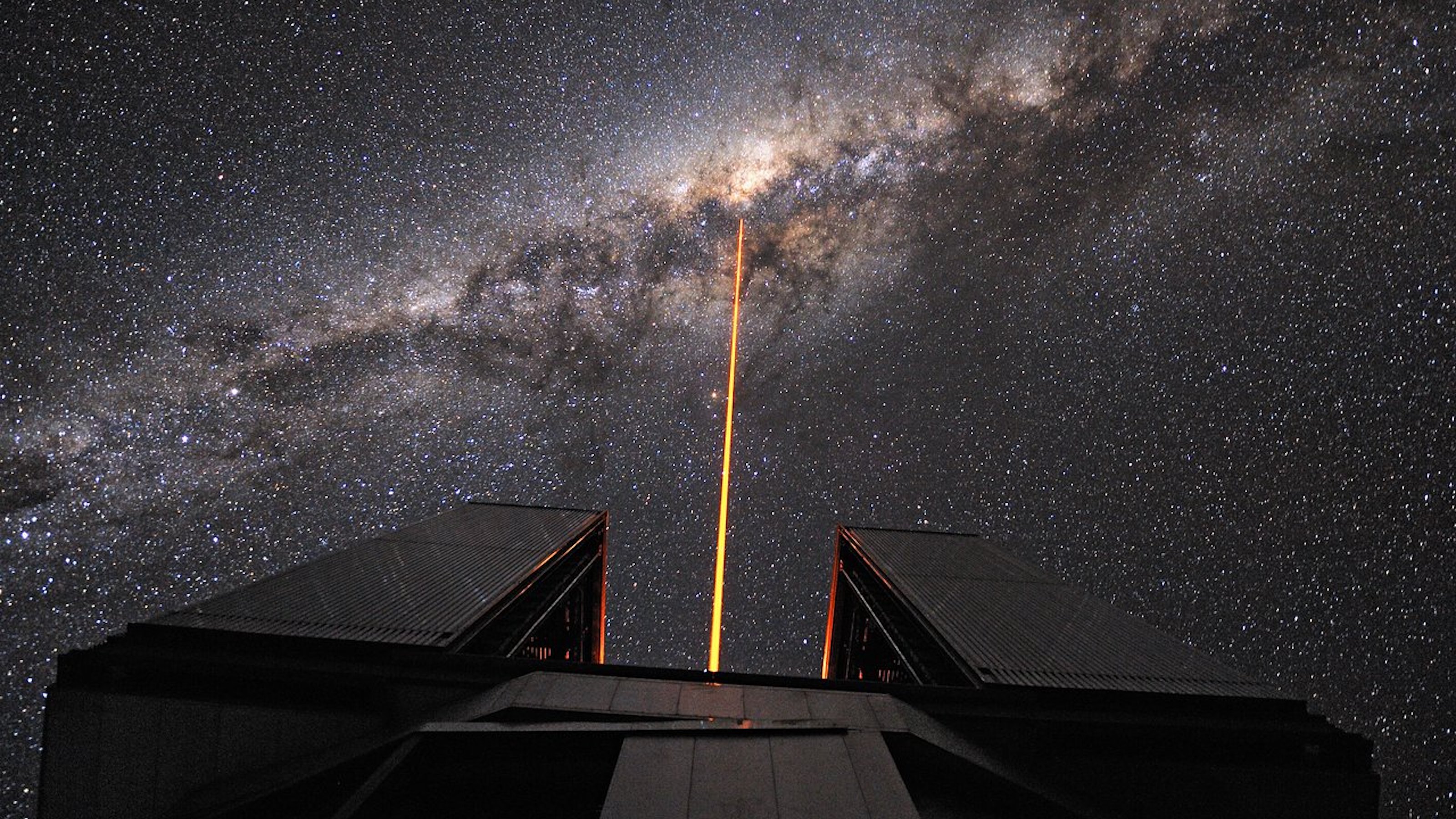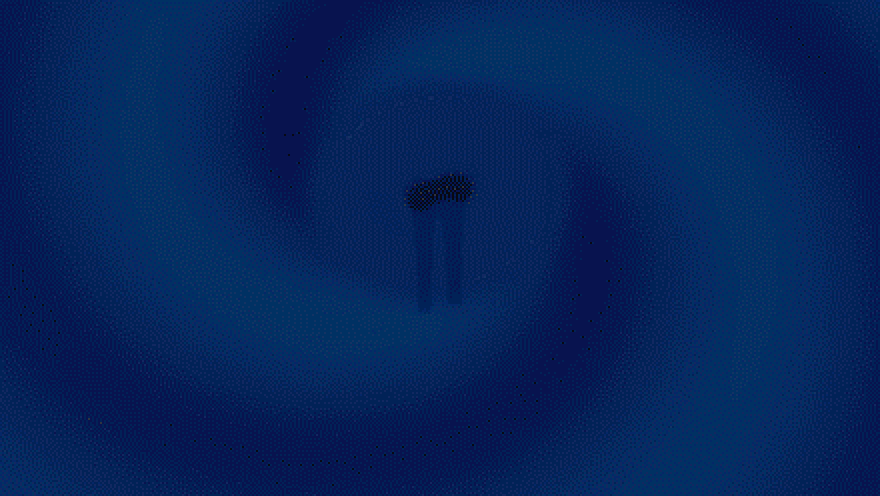This Is How Astronomy Is Finally Defeating Its Greatest Enemy: Earth’s Atmosphere
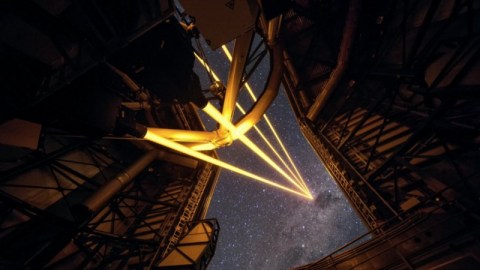
Lasers, mirrors, and computational advances can all work together to push ground-based astronomy past even the limits of Hubble.
One of the most profoundly remarkable properties about our atmosphere is that it’s transparent to not only sunlight, but to starlight as well. As we turn our eyes skyward after the Sun goes down, a glittering tapestry of planets, stars, galaxies, and nebulae illuminates the heavens. If we want to view it, all we have to do is look with the proper tools.
But our view of what’s out there, from here on Earth, is limited in ways we rarely think about. Even on a cloudless night, any light coming to us from space must pass through over 100 kilometers (more than 60 miles) of atmosphere, which itself has continuous variations in density, temperature, and molecular composition. Any light coming in has to contend with the atmosphere, and even though the atmosphere is transparent, that light inevitably gets distorted.
For the first time, astronomers are finally capable of overcoming Earth’s atmosphere. Here’s how.
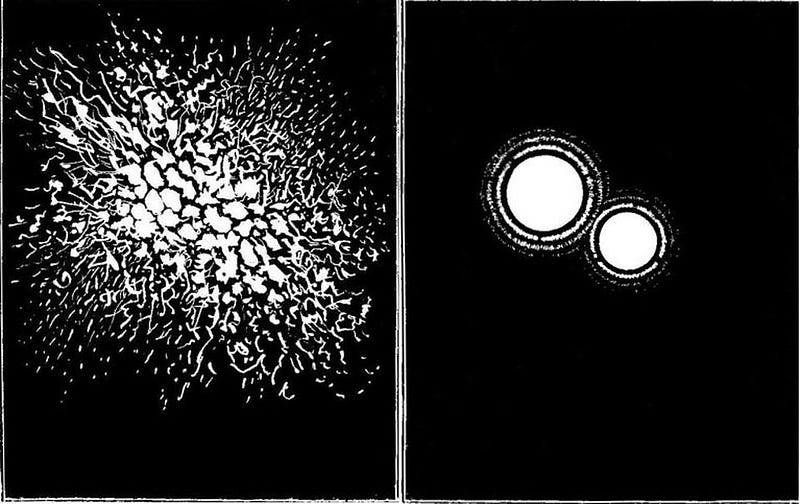
The best way to view the Universe is with the largest, most powerful, and most accurate telescope you can possibly create. The larger your telescope is, the more wavelengths of light can fit across it, increasing its resolution. Larger telescopes also mean better light-gathering power, enabling you to see fainter objects more quickly and in greater detail. You want the darkest skies possible, as far away from any and all significant sources of light pollution, including cities, squid fisheries, and even the Moon. You want to build your telescope at the highest altitudes possible in the driest conditions possible, eliminating the effects of clouds and water vapor.

But no matter how high your altitude, you’ll still have Earth’s atmosphere to contend with.
The warm air rises, the cool air sinks; the winds blow; the Earth rotates; etc. All of these effects and more cause the molecules of our atmosphere to move and jitter around constantly. Astronomically, every observer must try and find ways to compensate for the trillions upon trillions of molecules interfering with every camera pixel attached to your telescope.
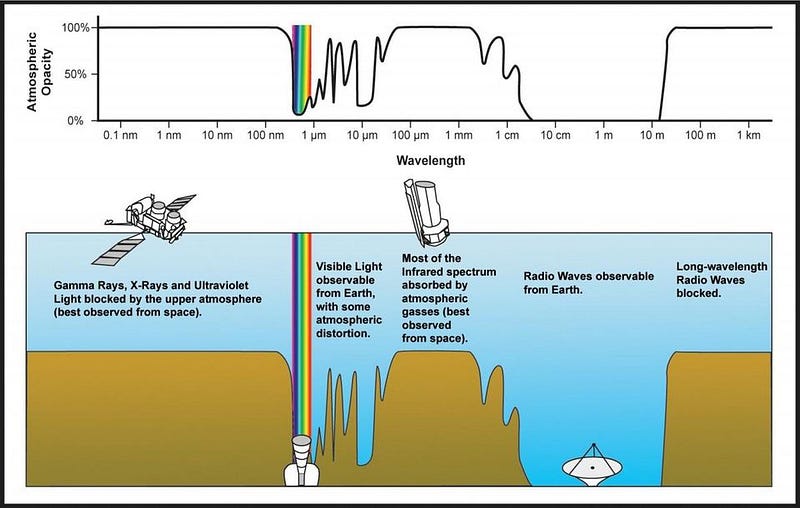
Our atmosphere is a turbulent entity, with the stratified gas layers flowing in a somewhat chaotic, unpredictable fashion from any point of view. It’s fair to say that the lowest layers are the densest and the most disruptive to our observations, which is why telescopes are built at such high altitudes and in locations with notoriously still, dry air.
For decades, the only hope of overcoming this was to launch a telescope to space, where it would rise above the atmosphere. But over the past few decades, a new method has emerged to help address this problem: the use of adaptive optics.
If you look out at an astronomical target and attempt to image it, the atmosphere will severely distort the light along its path from space until it reaches your telescope. But if you know the exact position and brightness properties of even a single object in the sky — such as a star — there’s a procedure you can follow to compensate for the atmosphere incredibly well. The four steps are as follows:
- Measure the incoming light from an entire field-of-view, including from the known (guide) star.
- Make a copy of the light exactly as it is as it comes in, delaying its arrival at the final destination.
- Compute what shape you’d need a mirror to have in order to revert the distorted light from the guide star back to its original, point-like shape.
- Then create that mirror, and reflect all of the delayed, incoming light off of it.
When that delayed, reflected light arrives at your sensor, if you’ve done your job correctly, you should have a distortion-free image.
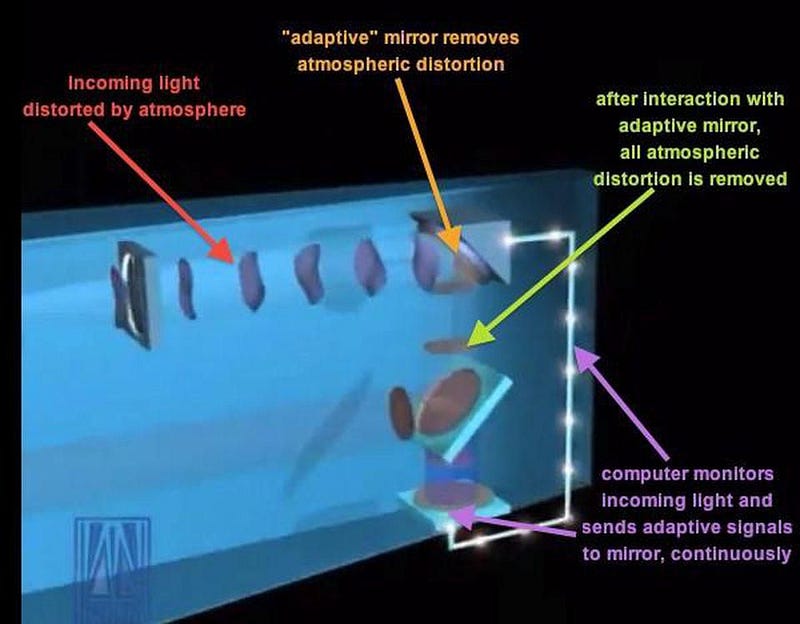
The reason this is known as adaptive optics is because this isn’t a one-time adaptation, but rather a continuous process. The mirror must constantly adapting to the chaotic changes in the atmosphere in order to compensate for the continuously changing distortion.
For a time, we could only use adaptive optics to observe targets that had a known, well-understood star nearby to use as a guide. But as our technology has advanced, we are no longer bound by that restriction. Humanity has developed a spectacular system for adapting to the atmosphere where no bright guide star is present: the creation of an artificial star through the use of sodium lasers.
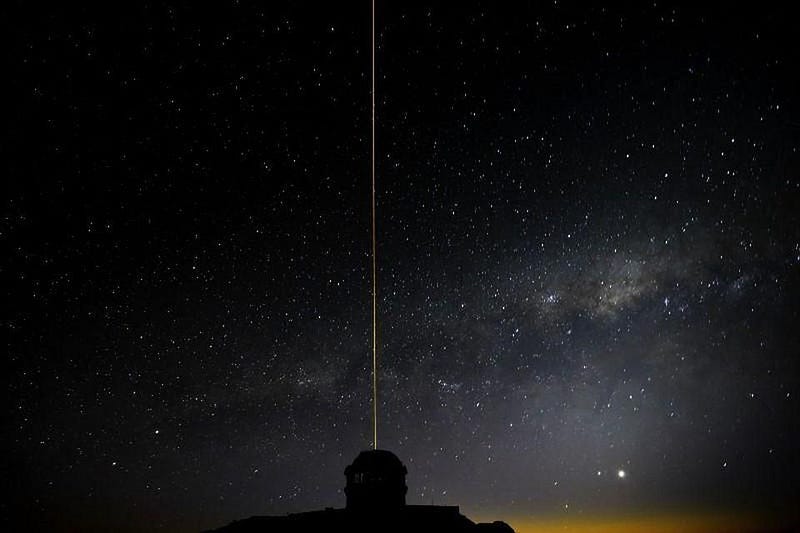
The fact that our atmosphere is layered is crucial to the success of this method. Certain elements are segregated from the others, and are found only at very particular altitudes. One of the elements that’s very rare is sodium, which happens to be concentrated in a thin layer about 100 km (60 miles) up.
If you fire a sodium laser into the air, it will travel unperturbed in a straight line (except for the atmospheric distortions), because none of the atoms in the lower atmospheric layers have the right quantum properties to absorb it. The laser light will continue on until it collides with those sodium atoms found in that thin, high layer, where it will be absorbed and send them into an excited state. Those excited atoms then spontaneously de-excite, emitting light in all directions, including back in the direction your laser came from. This artificial light source, created by ground-based sodium lasers, can now be used as an artificial guide star.
It’s not quite as good as having a true star, of course, since the atmosphere continues on, albeit tenuously, so long as Earth’s gravity is important. Even satellites and observatories orbiting hundreds of kilometers above the atmosphere will eventually fall back to Earth, owing to the drag that these distant atoms and molecules provide.
But even though the artificial sodium guide star won’t be above 100% of the atmosphere, having a known light source at such a high altitude removes upwards of 99% of the distortion. Even from the ground without a true guide star, modern observatories can compete with space-based telescopes in terms of seeing quality, but with much larger telescopes. Compared to Hubble, telescopes like Keck, the VLT, Subaru, Gemini, or the Gran Telescopio Canarias have up to 19 times the light-gathering power, with telescopes like the GMT and the ELT slated to take that superiority into the triple digits.
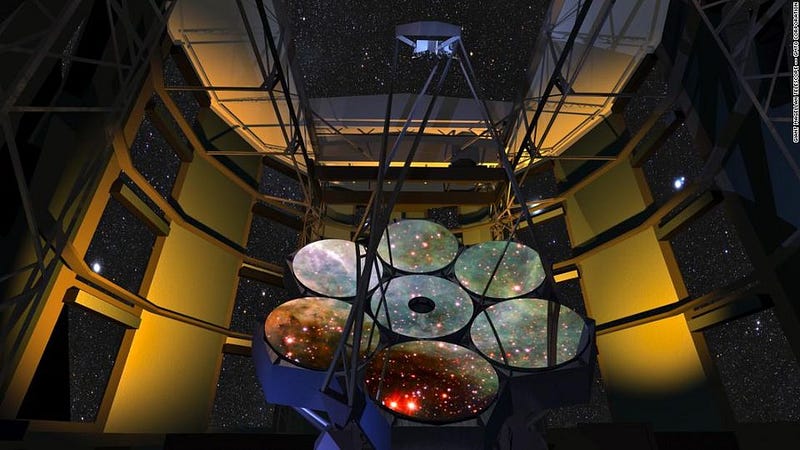
In 2012, for the first time, we used the then-most-advanced adaptive optics technology in the world, attached to the Gemini Observatory, to outperform the Hubble Space Telescope in a side-by-side comparison.
See for yourself by comparing the image below — taken from a ground-based 8.19-meter telescope outfitted with cutting-edge adaptive optics on the right — with the 2.4-meter Hubble Space Telescope (on the left) which is in space! See if you can identify, side-by-side, a number of instances where Gemini uncovered stars that Hubble missed.
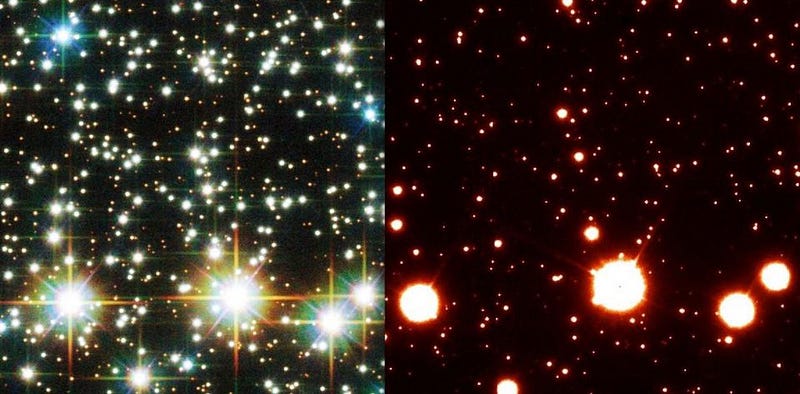
Despite its tremendous successes so far, adaptive optics is a field that is still improving. A single point in the sky can only provide so much information about the atmosphere overall, and going up to 100 kilometers still leaves the highest altitudes unaccounted for.
The day may come where we’re building ground-based telescopes on the Moon or have a working space elevator, but those are a long way off. Adaptive optics, then, is likely to see continued improvements over the coming years. The greatest recent advance, which bodes incredibly well for the future, comes courtesy of Paranal Observatory, which houses the VLT: an array of four 8-meter class telescopes in one of the best observing sites on Earth.
The telescopes at Paranal, a partner of the European Southern Observatory (ESO), incorporate the most advanced new improvement ever in the field of adaptive optics: the 4 Laser Guide Star Facility (4LGSF).
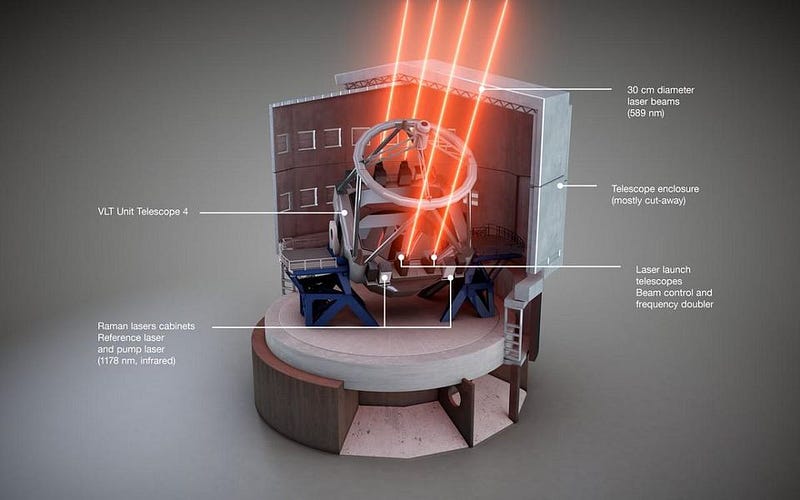
By creating four guide stars instead of one, astronomers can better adapt to the entire field-of-view of the image. The artificial stars can be moved around the sky independently both of one another and of the telescope, enabling the adaptive techniques used to be optimized for each image independently. This is a huge new potential success for telescope technology, and it promises to improve ground-based telescope images across the field-of-view substantially. As the ESO themselves state in their press release:
Using more than one laser allows the turbulence in the atmosphere to be mapped in far greater detail to significantly improve the image quality over a larger field of view.
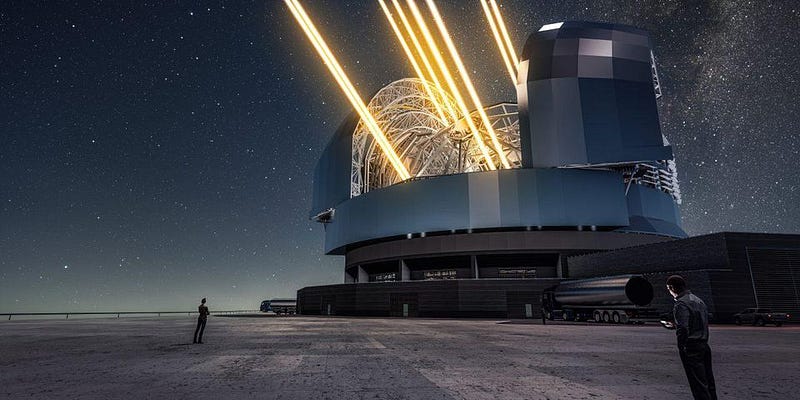
This is not only a tremendous boon to astronomy, but represents the potential of successful collaborations between government-funded endeavors and private industry. Without the participation of both, improvements such as these would have been impossible. With 25-to-39 meter class telescopes scheduled to come online in the coming decade, including the future ELT at 39 meters and also managed by ESO, it’s never been a better time to be a ground-based astronomer.
For decades, the only ways to contend with the atmosphere were either to live with it or to go above it. Yet over the past few years, all of that is changing. It’s time to seriously consider outfitting all of our large observatories with adaptive optics systems like this. If these improvements continue, ground-based astronomy may be able to surpass space-based telescopes, as far as quality-imaging-per-dollar goes, once and for all!
Ethan Siegel is the author of Beyond the Galaxy and Treknology. You can pre-order his third book, currently in development: the Encyclopaedia Cosmologica.
